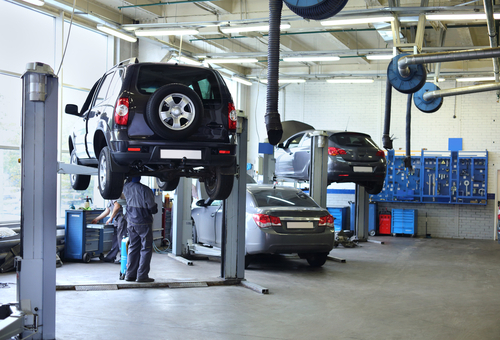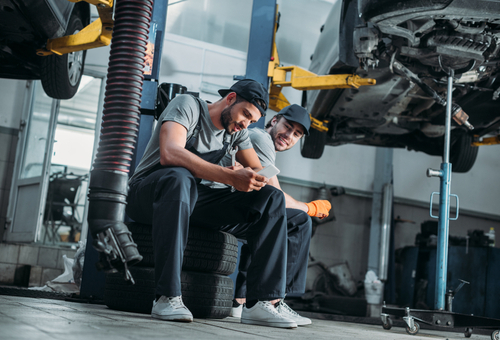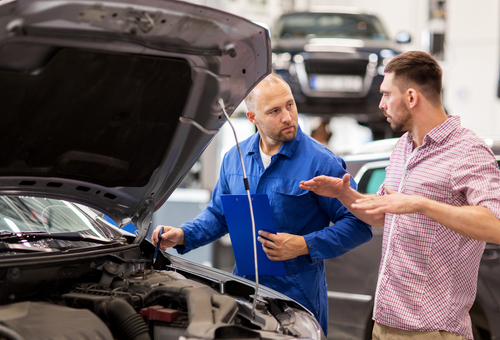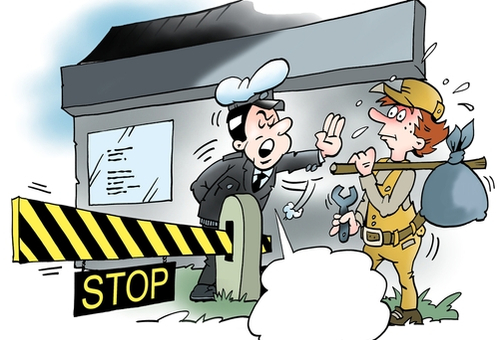
The Covid-19 pandemic has decimated the economy, and it will continue to do so for the foreseeable future. While there is no telling how this devastation will affect the national economy in the long term, what is certain is that in the short to medium term, most car owners will begin to push both scheduled and preventative vehicle maintenance progressively further down on their lists of priorities as economic conditions worsen.
The entire automotive industry has seen a sharp decline in business activity, but despite that, there will always be a need for vehicle repair services even though the pool of customers might be smaller now than it was before the pandemic arrived. Nonetheless, there is much that we as technicians can do to keep our places of employment in business and in this article, we will discuss some of those things, starting with this-
This “game” can take many forms, the most common of which is the “Ever since you...” approach that many customers excel at. Note though that while we are not suggesting that most customers are less than honest and upstanding, this writer has gained extensive experience of this approach over his 20-plus year career as a workshop owner/manager.
The most common form of the blame game goes something like this- “Ever since you replaced the wiper blades on my car, the brakes don’t work as they used to”. There are endless variations on this basic theme, but the point is that in the vast majority of cases, the complaint has no bearing on the work you performed. Entertaining such claims or even being drawn into interminable discussions about them with a client is not only expensive in terms of time and productivity lost, but it may also be expensive in terms of replacing parts or doing diagnostics for free just to be rid of the customer.
There are two ways to largely prevent these kinds of situations from arising in the first place. The first is to document all faults, deficiencies, and obvious signs that a vehicle may soon need additional work during your initial inspection of a vehicle, and the second is to make sure the front office staff makes the vehicle owner aware of what you found during the inspection when he collects his vehicle.
Doing this not only covers yourself should a problem develop later on; it also reduces (if not eliminates) your employer’s liability should a vehicle suffer catastrophic brake failure or experiences some other disaster when all you did was to replace the wiper blades.
Although this item is more aimed at service advisors/writers than at technicians, technicians are not entirely absolved of the requirement to make sure they have everything they need to access all parts of a vehicle for repair work.
Typical items include, among other possible examples, special sockets and/or adapters to remove custom and/or aftermarket wheel nuts/bolts, operable service or spare keys to the vehicle if the vehicles’ owner cannot part with the primary key(s), or the locations of deactivation buttons of aftermarket anti-theft/security systems.
This writer has lost count of the times that service writers were obliged to either fetch special wheel nut/bolt sockets and/or spare keys from customer’s homes or places of work, or to phone customers to deliver these items to the workshop since work on the vehicle could not begin in their absence. In each of these instances, time and money were lost, which is something no workshop can afford in these times.
While most repair and/or service procedures do not require that the fuel tank be full, diagnosing and fixing some issues, such as, for instance, leaks in EVAP systems require that fuel tanks be filled to above, but below prescribed minimum and maximum levels. One other example of a vehicle requiring sufficient fuel involves some relearning procedures that stipulate the completion of one or more prescribed drive cycles, some of which can be lengthy.
We all know these things, but most customers can be forgiven for not knowing these things, which means that significant amounts of time and productivity can be lost if a technician has to take spend time to have the vehicle’s fuel tank filled to the required levels.
One of the biggest time and money wasters in any workshop is not having enough information. We are of course not referring to service information, but background information about the customers' concerns. Things like when did the symptom(s) start, and under what conditions? You also need to know other things like whether or not the symptoms started suddenly, or if the symptoms had been getting worse over time, and of course, whether or not other workshops had attempted repairs.
While not knowing some or all of these things might not necessarily bankrupt the average workshop during normal times, we are not living and working in normal times. All workshops now need to maximise productivity, efficiency, and especially billable time to make the most of the reduced daily vehicle counts we are all seeing.
The alternative is to deal with increased pressure on profitability. Although we, as employees, might not consider this to be our problem, the truth of the matter is that unless we all play active parts in increasing or at least maintaining the profitability of our places of employment, government-sponsored aid to small businesses may not be enough to ensure our long-term employment.

All of us have postponed or rescheduled various kinds of appointments for various reasons in our lives, and there is, therefore, no reason to believe that our customers may not also sometimes need to postpone or reschedule appointments with us for various reasons. These things happen all the time, but some customers forget, or simply choose not to let us know when they cannot make it to an appointment on time.
As technicians, we all know the feeling of being left hanging while we wait for a customer to arrive while we have several other jobs in our queues that we cannot make a start on. If we do, it often happens that the customer arrives just as we have the next job on the lift, and none of us likes it when this happens. However, if you would care to look at this kind of situation from a management perspective, you will see that it is infinitely worse for the owner/manager of the workshop than it is for you because management might not be able to fill the time slot that had been allocated to the customer that did not arrive.
Although it may not be strictly our jobs to do this, it does not take much to let management know that if the tardy customer does not arrive in the next ten minutes, it may be impossible for you to accommodate him/her that day. From a profitability perspective, it is better to risk losing one customer, than it is to rush through the six or seven other jobs you have waiting, and then to risk potentially expensive comebacks on all or any of them because you waited too long for a customer that was not going to arrive, anyway.
In the context of this article, “quickies” refer to those kinds of jobs that many customers think are quick and easy to diagnose or do because you are “an expert at what you do”. We may be experts at what we do, but we also know that there is no such thing as “quick and easy” when it comes to diagnosing and/or fixing modern vehicles.
Generally, employers do not like to hear “quick and easy” and then seeing a technician still struggling with the same problem several hours later- while his other jobs are neglected. While it is relatively easy for newcomers to the car repair trade to get into these situations, doing so is not only bad for business from a time management perspective; it is also not good from a profitability perspective. Moreover, given that during these challenging times almost all employers are now under immense pressure to maintain profitability, wasting time on “quickie” jobs may not enhance the time waster’s career prospects.

We do not always understand our customers’ priorities, but that should not prevent us from educating them, or at least, trying to educate them on what is important and what is not from a safety perspective. We can all recount tales of how customers wanted to have their radios fixed when they should rather have been spending money on getting brake pads or other safety-critical items replaced or repaired, but in these difficult times, we may need to take a slightly different approach.
This writer is not suggesting that we should now start to neglect or ignore shortcomings on, and deficiencies in our customers' vehicles. However, for many customers perception is reality, so what we do not want to do is to create the impression that we are recommending repairs only to inflate a repair bill the customer might not be able to pay. Customers hate the feeling that they are being pushed into allowing work on their vehicles that they cannot afford to have performed, which means that we now have to be extra careful in how we talk to customers.
Since being paid for work we do on vehicles is now just as important as keeping our customers safe, we could perhaps inform customers that we have found X, Y, and Z wrong with their vehicles, but that while X and Y are not safety-critical, Z most certainly is, and it needs to be corrected as soon as possible.
This approach might not work for all workshops and/or all customers in all situations, but it has been this writer's experience that most customers appreciate our concern for both their safety and financial position. As a result, most customers will usually consent to have only the most pressing issues on their vehicles fixed immediately, and while the final bill might therefore not be as big as we had hoped, a smaller bill is infinitely preferable to losing a potential paying customer to a competitor.
While different jurisdictions have different guidelines when it comes to sanitising vehicles, this writer has recently gained several customers who felt that their usual service providers were not properly sanitising their vehicles after having worked on them. This may or may not be true, and even though it is almost impossible to see whether all touchpoints in a vehicle have been properly disinfected, using this argument to justify doing a shoddy sanitising job is a good way to lose a customer forever.
Look at this issue this way: if you expected someone to disinfect your vehicle properly to safeguard not only yourself but also your family, would you be thrilled to discover that the service provides had sanitised everything in your vehicle, except the gearshift and internal door handles? Of course not, and you would almost certainly never go back to that service provider, so why should your customer(s) feel any different when they discover dust on, for instance, internal door handles?
The presence of dust and grime on internal surfaces in a vehicle means that those surfaces were not wiped down with disinfectant or an approved sanitiser, so pay proper attention to sanitising guidelines and principles both to protect yourself before you start work on a vehicle, and after you complete work on a vehicle to protect your customers against infection.

This might come across as preaching to the converted, but the fact is that breaching and/or ignoring health protocols can endanger a workshop's entire workforce. It may be true that while both state/territory and employer-enforced health protocols can make your daily life at work more difficult, the fact is that getting infected and ill is infinitely more difficult.
Moreover, while getting sick may be difficult for you and the people that depend on you, you getting ill may be more difficult for your employer because he might now have to pay you while you are off work during a time when business may be very slow, or close to non-existent, which leaves us with this-
None of us wants to get sick, but with some forethought, common sense, and by following prescribed health protocols, we can greatly minimise the risk of getting infected while at the same time, doing the best we can to maintain the profitability of our places of employment.
While doing both things at the same time may not always be easy, giving the process our best collective shot is the only way to ensure that the damage to the car repair industry in general, and our places of employment in particular, is kept to a minimum.